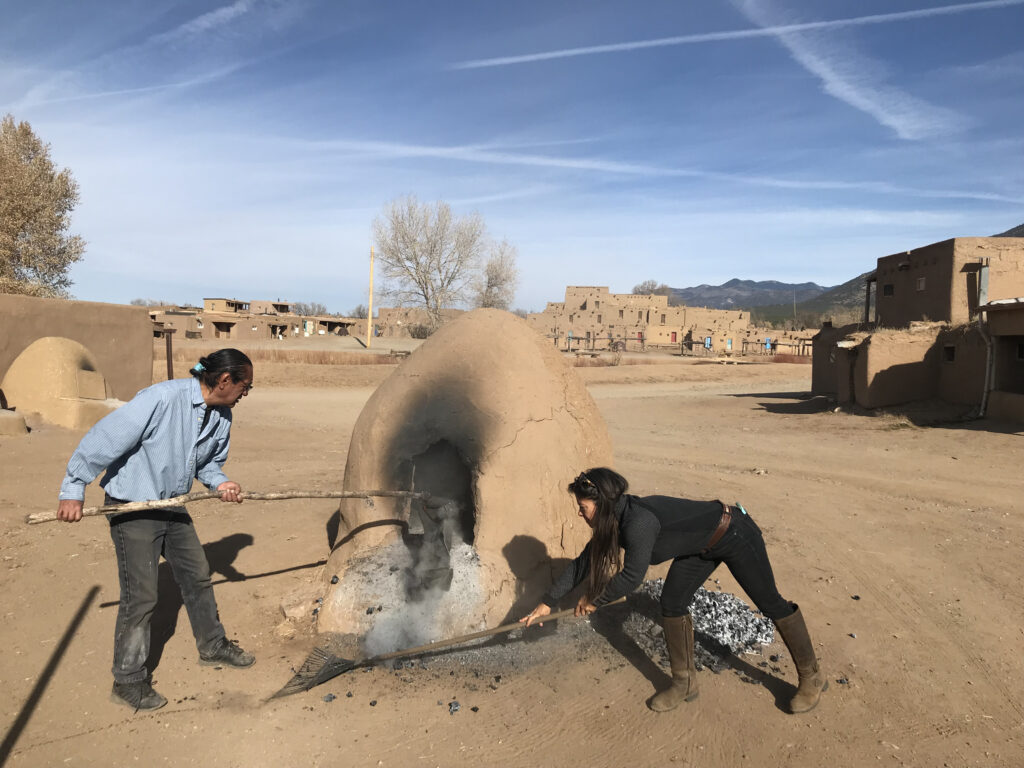
Statuesque mountains and deep, roughly carved canyons created the backdrop for sagebrush and conifers as we traveled to the unique town of Taos. A small group of us from the International Food, Wine & Travel Writers Association were about to embark on a few days witnessing why people love Taos. Our first stop would be Taos Pueblo, a very special place I have wanted to visit for years.
The vastness of the area, which hasn’t been developed, warmed my heart as we saw cattle grazing on green pastureland. In the spring, there are blossoms everywhere, including lots of plum blossoms. We knew because this land belongs to the Taos-speaking Native American tribe of Puebloan people, it would never be developed. (We later learned about the single most important event in recent history which was in 1970, 48,000 acres of mountain land, including the sacred Blue Lake, was returned to the Pueblo. That makes the total land base 99,000 acres with an elevation of 7,200 feet at the village.)
Once we arrived, we crossed over a small bridge with a flowing stream underneath. We were told this water is some of the purest on earth and used for drinking water. The Pueblans follow the tradition of no electricity or running water within the Pueblo walls. Most members live in conventional homes outside the village walls but occupy their Pueblo houses for ceremonials. There are approximately 150 people who live within the Pueblo full time and around 1900 Taos Indians living on Pueblo land. In addition to English and Spanish, the people of the Taos tribe speak the native language of Tiwa which is the word for “red willow people.”
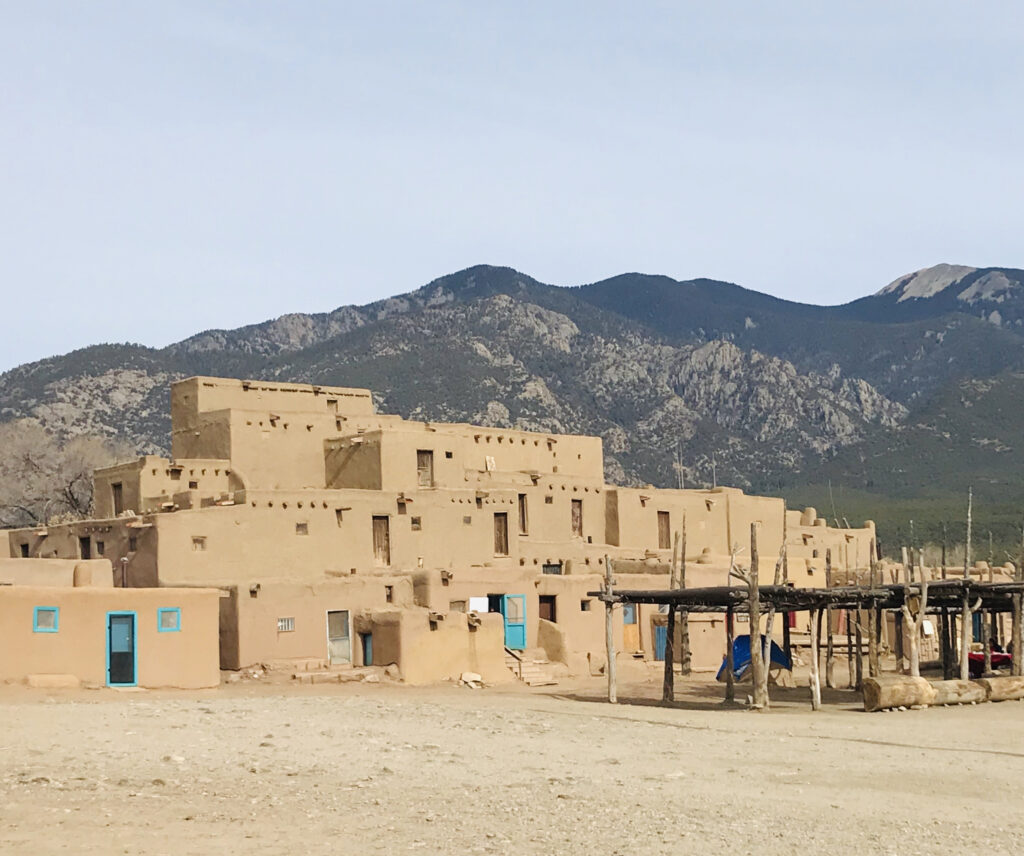
As we gazed ahead, we saw the adobe buildings that we have seen in photos. These buildings are actually individual homes like our modern condominiums. However, in the early days, there were no doors or windows; entry was only gained from the top. This was a means of protection because enemies didn’t like the idea of climbing down into the hole on the top where they didn’t know what awaited them. These multi-story structures are the largest and the oldest continuously inhabited communities of existing Pueblo structures in the U.S. They were constructed between 1000 and 1450 A.D.
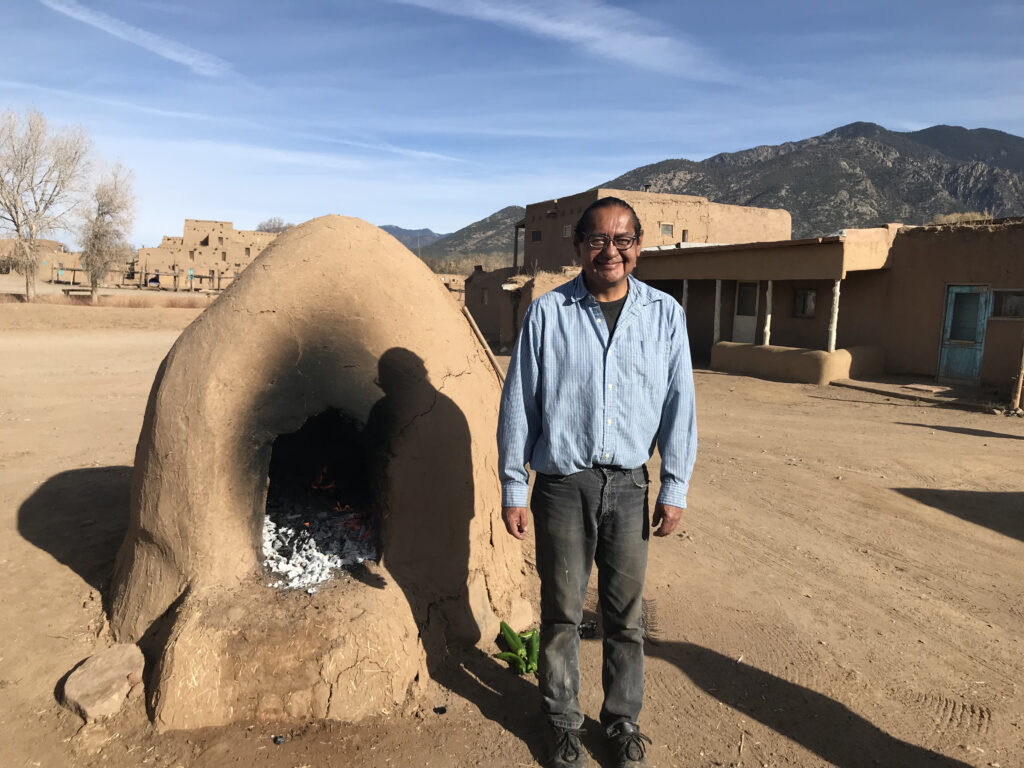
We were with our guide, Angelisa Murray from Heritage Inspirations, who set up our trip where we would meet Geronimo and see his baking skill at work. Geronimo told us he was born in September, the month when San Geronimo Taos Pueblo Feast Day is celebrated, a ceremony of religious syncretism (Catholic and Pueblo religions.) This time celebrates St. Jerome, the patron saint of Taos Pueblo.
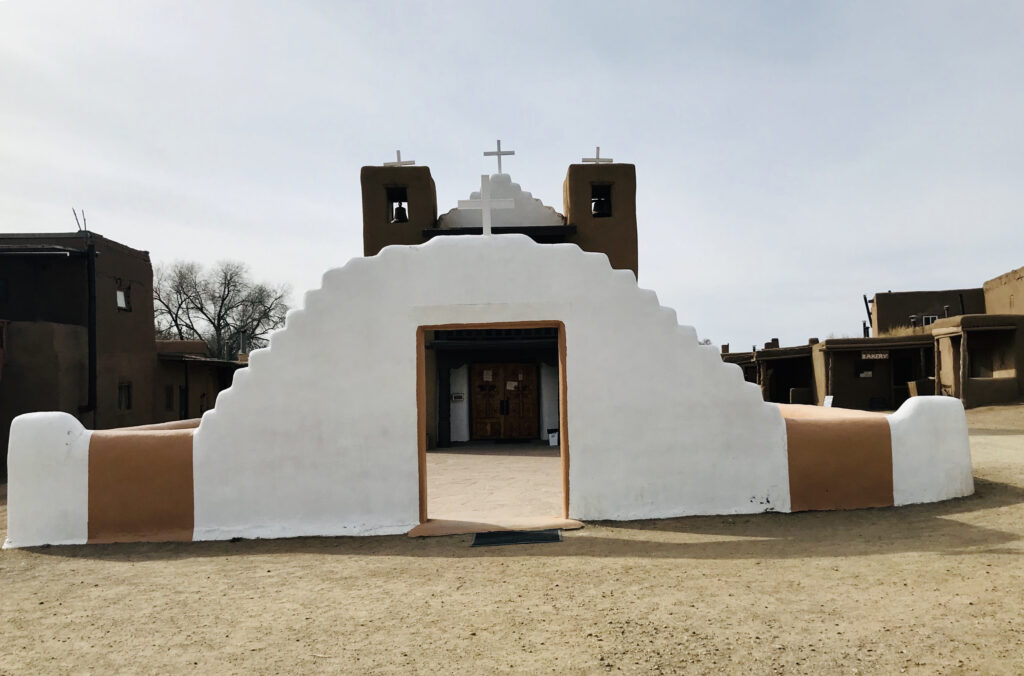
As we meandered through the pueblo, we saw Geronimo who greeted us at his adobe home behind the outside horno oven where he does his baking. He does so much baking that he sells his bread at the local farmer’s market, Red Willow Farm. He sells as many as 350 loaves for feast days in the village.
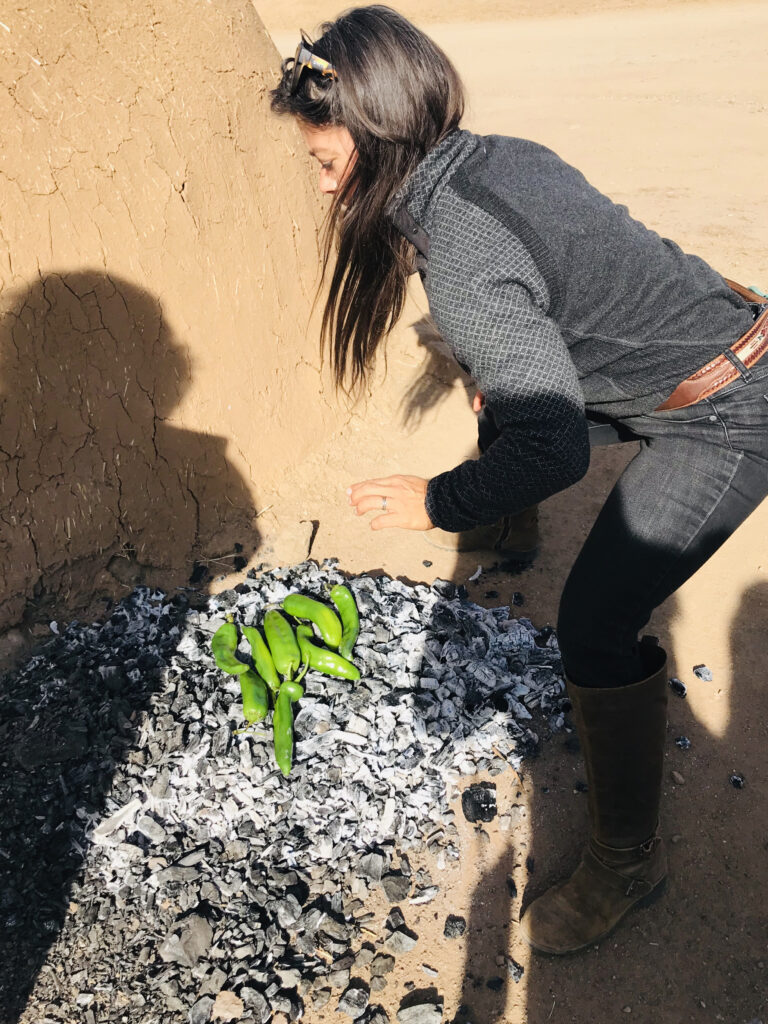
The interior of the horno oven is heated with cedar wood that is placed inside the opening. The oven is heated to a temperature that is perfect for baking bread. It takes about an hour to reach that ideal temperature. When that temperature was reached, both Geronimo and Angelisa scooped out the coals and set them beside the oven. Angelisa placed the famous Hatch Chiles on top to char them while Geronimo slid the round bunches of rolls into the horno oven to bake.
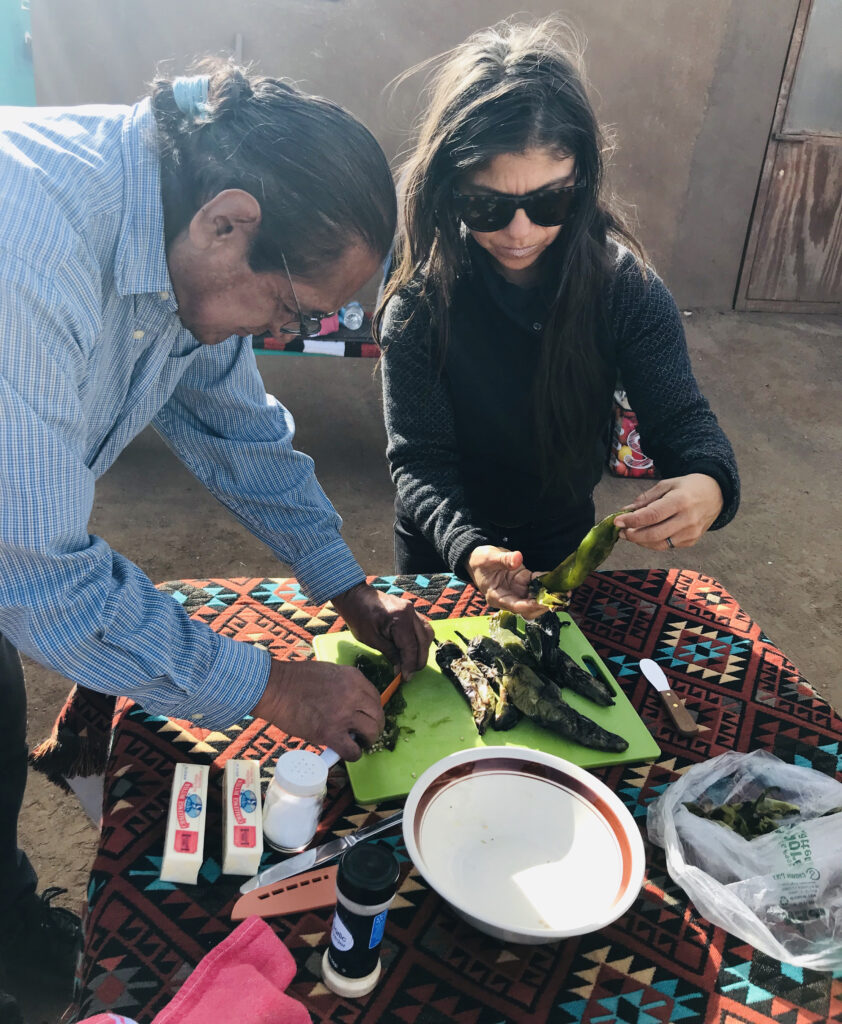
As soon as the chiles were charred, they were removed from the coals, peeled, chopped, and salted. Soon, a perfectly baked loaf of rolls was produced from the oven where they were generously buttered on the top. The aroma was mind boggling with the yeasty fragrance of the baked bread and the rich butter. On top of each roll, we placed those delicious chopped chiles. What a taste treat! To our delight, each of us was given a loaf of rolls wrapped in some beautiful gift paper and tied with a bow to take home.
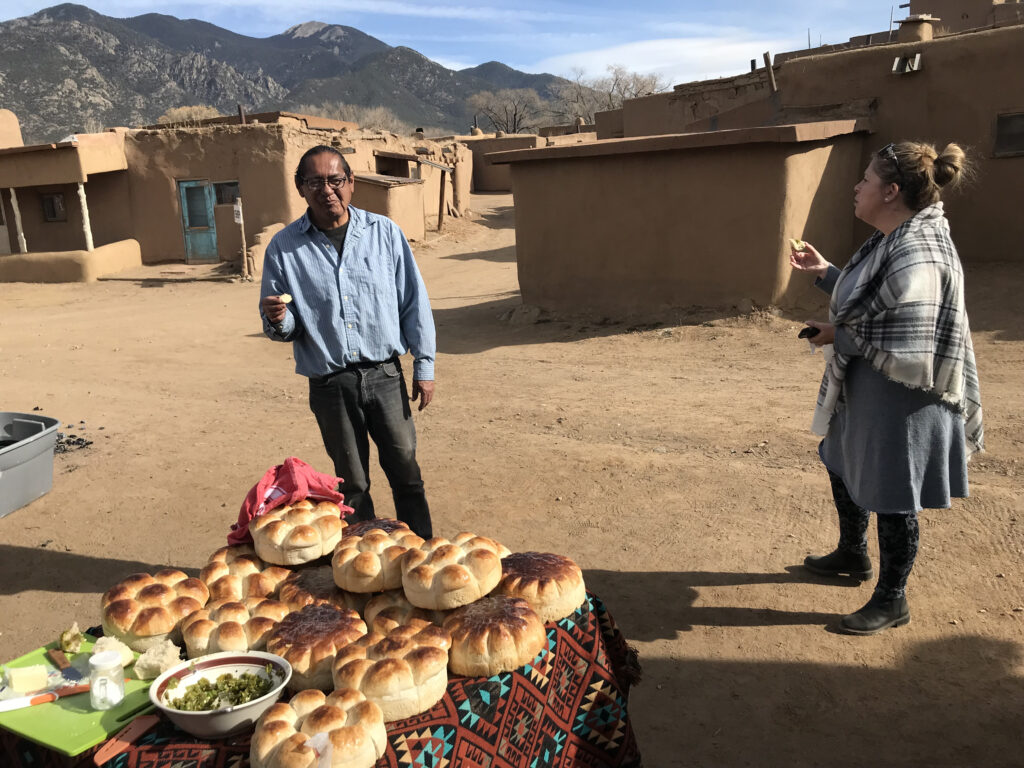
I was hosted for this event, but for me, this was the highlight of our Taos trip, and I would recommend contacting Heritage Inspirations to have Angelisa arrange this adventure.
Taos Pueblo was admitted to the World Heritage Society in 1992 as one of the most significant historical cultural landmarks in the world.
The Pueblo is generally open to visitors daily from 8 am to 4:30 pm, except when closed for ceremonies. Either contact Angelisa at Heritage Inspirations or call ahead to (575) 758-1028.
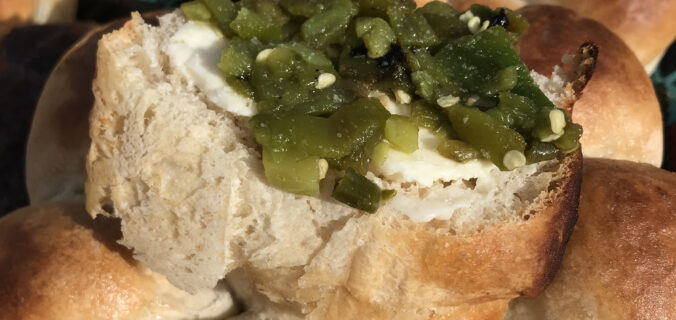
We indulged in Navajo flatbread with honey and powdered sugar sprinkled on top. Tasty!
That sounds wonderful, Janie! I remember stopping at a reservation in Oregon to try that.